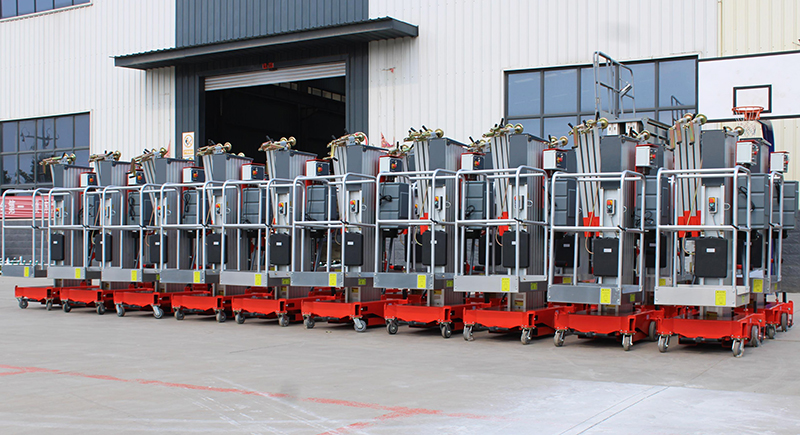To select a vertical mast lift for an indoor scenario, consider the required height and weight capacity, the footprint and maneuverability needed for tight spaces, the power source (electric is best for indoor environments), and the specific safety features like guardrails and emergency stop buttons, ensuring the chosen model can reach the work area safely, efficiently, and without damage to to the floor.
Key Factors to Consider
Height Requirements: Vertical mast man lifts typically reach up to 40 feet, but larger models are available for higher needs. Ensure the lift's maximum height meets your task's requirements.
Weight Capacity: Determine the combined weight of workers and tools that will be on the platform. Vertical mast lifts have different load capacities; for example, a double mast man lift handles more weight than a single mast.
Maneuverability: For tight indoor spaces like warehouses or small offices, consider the lift's footprint and turning radius. Electric, self-propelled, and compact models with zero turning radius are ideal for navigating tight areas.
Power Source: Electric mast lifts are perfect for indoor jobs because they are quiet, have no emissions, and are suitable for sensitive areas.
Platform Size: The platform's size should accommodate the necessary personnel and equipment.
Ground Conditions: Check if the lift can be used on indoor surfaces without damage; polyurethane wheels are less likely to damage the ground.
Safety Features: Prioritize models with safety features such as guardrails, fall protection attachment points, and an emergency stop button.
How to Select for Different Scenarios
Small, tight spaces (like warehouses): A compact, electric vertical mast lift with a zero-turn radius is best for cost-efficiency and ease of use.
High ceilings (offices, atriums): A taller vertical mast lift can provide access without the need for complex setup, like outriggers.
Tasks requiring tool access: Some lifts offer features like work trays, increasing their versatility for maintenance and installation tasks.
Before You Begin
Conduct a Risk Assessment: Identify all job-specific risks, the work environment, and any limitations of the work site.
Ensure Proper Training: Operators should receive proper training to ensure safe and efficient operation of the lift.
Inspect the Lift: Before each use, inspect the lift to ensure it is in good condition and has all the necessary safety features.
Post time: Sep-19-2025

